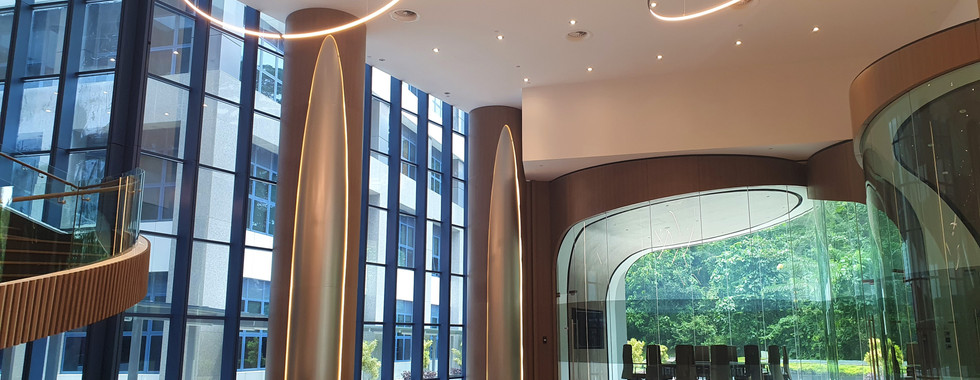
Xilin Districentre A&B / Source: CapitaLand
One of Singaporeans’ favourite form of investments is real estate. While many are buying residential properties, a commonly neglected segment is the commercial sector. Unlike residential properties, commercial properties aren’t subjected to Additional Buyer’s Stamp Duty (ABSD). Another plus point is that commercial properties have the potential of getting higher rental yields as compared to residential properties.
For today, we will look at 4 different types of commercial properties that are available to investors.
Logistics
Logistics property refers to an enclosed area that is used for storage and distribution of goods. They are similar to warehouses but are much bigger in terms of size. Warehouses are usually smaller than 5,000 sqm in size, whereas logistics properties are often 10,000 sqm and above. Some logistics properties can go up to above 200,000 sqm in size.
The most important factor for logistics properties is location. Ideally, they should be located near the airport or seaport and easily accessible via expressways. This is crucial as there must be ease of transportation to and from ports and distribution points.

An example of a commercial property centered at Logistics is Xilin Districentre A&B
The number of loading/unloading bays with ramped-up access is also critical. Before deciding on a logistic property, find out if there are enough loading/unloading bays with ramped-up access to ensure smooth operations during peak hours.
In Singapore, logistics properties are largely situated in the western and eastern parts. This is mainly for the need of quick and easy access to either the PSA’s seaports at Tanjong Pagar, Pasir Panjang and Jurong and the Changi Airport.
Industrial
As manufacturing is a core component of Singapore’s Gross Domestic Product (GDP), there is always demand for buildings with low office content combined with manufacturing space. Industrial buildings are categorised into Business 1 (B1) and Business 2 (B2) zoning and are used by manufacturing companies, assembly, warehousing and vehicle workshops.
According to the Urban Redevelopment Authority (URA), B1 zoning are industrial properties within a nuisance buffer of lesser than 50m as imposed by the National Environment Agency (NEA). B2 properties have a 50m or more buffer because of environmental issues that may cause pollution or nuisance to surroundings or nearby residential areas.
B1 industrial properties are suitable for clean and light trades, involved in light manufacturing activities such as software developers, publishing and printing, repair and assembly of electronics etc.
B2 industrial properties are suitable for businesses with heavier manufacturing and production operations and are usually located further away from residential properties. Trades involved are usually, biotech related, production of electrical products and equipment, vehicle repairs and servicing and warehousing etc.
Check out Industry property, 53 Serangoon North Avenue 4.
Most industrial properties’ tenure are 30 to 60 years lease, however there are some buildings with 99 years tenure and even freehold in certain parts of Singapore. Because of the shorter tenure, industrial properties tend to command a higher rental yield as opposed to other types of properties.
Industrial buildings are usually located within industrial parks, outside of urban areas. As always, in any form of real estate, location is paramount and ease of transport and accessibility to expressways are critical.
Hi-Specs
High-Specifications industrial properties are vertical corporate campuses with higher office content, combined with high-specifications mixed-use industrial space. These well-designed modern office-like façade comprise high office content and excellent building specifications, such as wide column span, high floor loading and high floor to ceiling height.
High-specs buildings are excellent choices for many Multi-National Companies (MNCs) wanting to house both headquarter and operations in a single building. These buildings are primarily located close to residential estates and are suitable for industries such as high-tech manufacturing and value-added enterprises such as data centres, precision engineering and multimedia manufacturing.
Easily accessible via major expressways and well-served by public transportation, high-specs industrial buildings are definitely an ideal business space solution for many businesses.
Aperia is a perfect example of Hi-Specs commercial properties
Business Parks
According to the URA, Business Parks (BPs) are designed for businesses engaged in High-Technology, Research and Development (R&D), high value-added and knowledge intensive activities. BPs have generous and lush landscaping, quality building designs, and a wide range and variety of amenities and facilities. They are mainly for use by technology and research-oriented industries which are non-manufacturing in nature.
BPs are designed for use by knowledge-based and high-tech companies and usually house regional head offices of global tech companies and the R&D arm of biotech and biomedical companies. As the rental costs of BPs are lower as compared to regular office buildings, financial institutions often house their backend operations and data centres here.
As BPs are considered industrial space, 60% of the rented space must be used for modern industrial activities. The remaining 40% can be used for supporting functions.
BPs have a wide range of retail and recreational amenities and are designed for companies to provide a work life balance environment.
Check out this Business Park, The Galen.
To view MOGUL.sg's complete list of commercial properties for rent, click here.



































Singaporeans love investing in real estate, and while residential properties dominate the market, commercial properties offer a unique advantage—higher rental yields and exemption from the Additional Buyer's Stamp Duty. Investing in logistics or commercial spaces near key transportation hubs can be a strategic move. If you're considering renting instead of buying, rent for tenants provides a wealth of rental options to explore. Whether you're investing in real estate or looking for a temporary rental solution, understanding the dynamics of both markets can help you make informed decisions that maximize your returns.